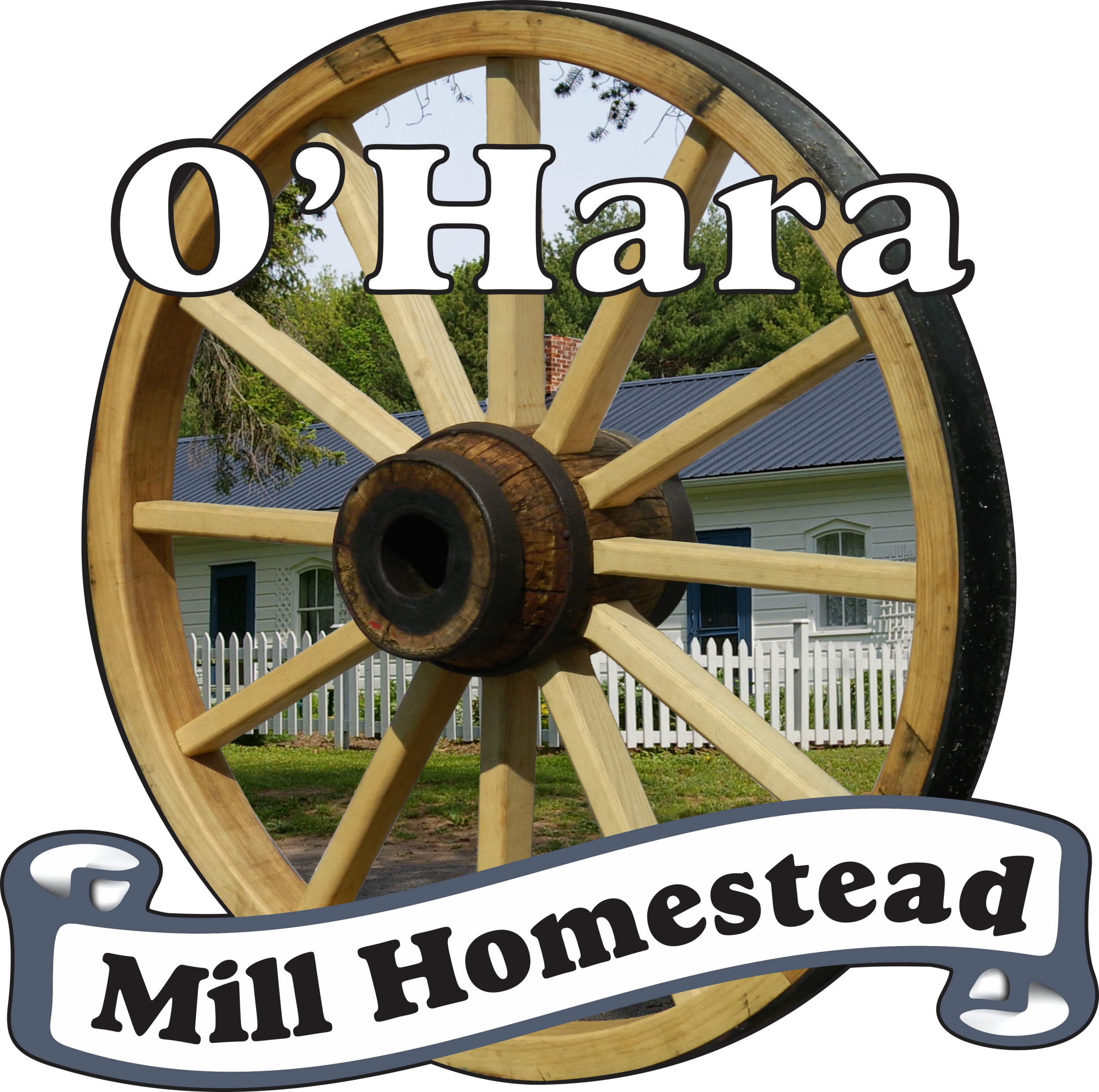A New Age of Transportation
Horses and Carriages/ August 1st, 2021
Dexter and Aunt Min
Today we are going to be taking a look at a brief history of how transportation has changed since the O’Hara family arrived in the 1800s until the last generation lived on the Homestead in the 1940s. We will take a look at roads, vehicles and the systems around transportation in Ontario to get a bigger picture of just how much things have changed since the homesteading days.
1800s Roads and The Arrival of Automobiles
Transportation in the 1800s was very different than it is now as we have shown by looking at horses and carriages this week. Roads were in fact not very common at the beginning of the century and the few that did exist were often rough dirt ones.
Around the start of the century, the government began to get more involved in road systems in order to “open new areas for settlement, to improve postal service, to foster commerce and to facilitate the administration of government and movement of the military”.
Corduroy road near Orillia, From Toronto Public Library
During this period there were a number of notorious types of roads that came into existence. One of these was the “corduroy” roads, which were rows of cut logs. As you can probably imagine, driving a horse and buggy over logs was not a comfortable ride and it was not uncommon for these roads to result in a horse breaking a leg.
Around the 1850s, split or sawn wood roads became more common as the lumber industry allowed larger amounts to be produced at a faster pace. The problem with these types of roads was that they only lasted around 1-2 years and were not practical except for in the cities. By the end of the century, macadam roads became the preferred technology. These roads were made of small pieces of stone.
The later years of the 1800s were known as the “dark age of the road” as a result of the authority around roads being constantly passed between different levels of government and a trend of new roads opening, but many old roads being abandoned.
1890s-1910s
Big changes happened in transportation during this time as a result of pressures from groups supporting two new forms of transportation. The arrival of bicycles resulted in a push for better roads, so did the arrival and popularity of automobiles!
Men trying to get their automobile out of muddy roads
City of Toronto Archives, fonds 1244 item 42.
In 1894, the Ontario Good Roads Association was founded. This group advocated for better and safer roads in Ontario. “The first Provincial Instructor in Road Making was appointed in 1896 in the Department of Agriculture to promote improved road construction and maintenance. This position became the Commissioner of Public Highways in 1900 and, in 1905, was transferred to the Department of Public Works as the Deputy Minister of Public Works”.
“Ontario’s first automobile arrived in 1898 and the first provincial legislation governing automobile use came into effect in 1903. It included a 15 mile-per-hour (approximately 24 km/h) speed limit and a requirement for vehicles to be registered”.
“By 1913, there were over 17,300 motor vehicles registered in Ontario, including 39 steam and 223 electric powered vehicles, and fewer than a thousand motorized delivery wagons and motor trucks. A total of 3,514 chauffeur’s licences were issued.”
Such a large influx of traffic, when no one was used to it resulted in traffic jams in the cities, especially in the Toronto area and highways began to spring up connecting cities such as Hamilton to Toronto. By 1916, the Ontario government recognized that the increase in vehicles and traffic warranted a department of its own for roads and highways.
Moving Towards Today
The Department of Public Highways of Ontario (DPHO), as the ministry was then called, was established on January 17th in 1916. The department began to plan a series of major highways in Ontario connecting cities and other routes. The war placed significant limitation on the progress of the highways, as there were few abled bodied men not contributing to the war effort.
When the 1920s came progress began to increase during the boom years, but after the 1929 crash one would assume it would fizzle out again. That was not in fact the case, as with many unemployed, a number of road projects sprung up working as relief for the otherwise unemployed. A number of large highways in Ontario were completed during this period.
With the arrival of World War Two road construction practically stopped, as focus shifted to munition production and men were sent over seas. This would have been around the time that Jenny O’Hara, the last O’Hara to live at the Homestead lived here.
During their time in Madoc and on the Homestead, the O’Hara family would have witnessed great strides forward in transportation. While removed from the city and the great highways, the family would have seen them on their travels and would have witnessed change on a smaller scale right here at home with their own change from the horse and buggy to the automobile.
𝓗𝓮𝓪𝓽𝓱𝓮𝓻 & 𝓜𝓲𝓪



